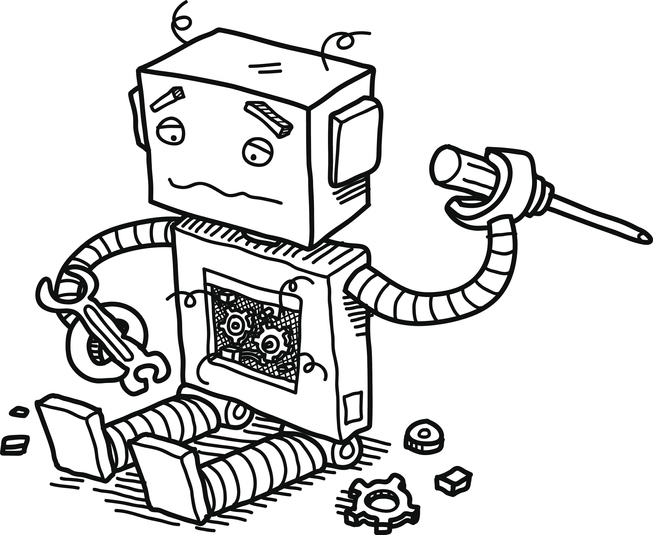3 Overlooked Ways RPA Can Help Drive Your Digital Transformation
RPA is seen as a key part of a company’s digital transformation, but, some people argue that it’s not a major driver of an organization’s goal to succeed in a digital world.
The argument is that it doesn’t really contribute to providing a digital-first experience. You see, implementing and scaling RPA is usually tied to embracing emerging technology. In short, it’s viewed as a good step forward to becoming more efficient internally and reducing the effort needed for back-office tasks and processes, allowing the enterprise to concentrate resources elsewhere.
Yet as companies become more advanced with their use of RPA, a lot of them are actually finding overlooked ways to take advantage of it to drive the digital-first initiatives at the heart of their digital transformations.
Here are just three ways they’re doing it:
1 – Leveraging RPA to Increase Digital Scalability
The challenge companies across industries faced in handling the surges in both supply and demand from COVID-19, led those that were unprepared to quickly try and figure out how to efficiently deal with those surges. After and even during the height of the pandemic itself, there have been countless cases of organizations aggressively scaling and implementing more automated processes to be able to absorb surges in customer demand, spikes in supply chains, and operate with a remote workforce.
A good example where RPA is contributing to digital transformations through scalability, is in digitizing critical parts of client-facing operations. In the face of big surges in cancellation requests, wait times for call centers went through the roof. The lessons learned have driven these customer-facing functions to automate key parts of processes – like automating the triage of requests – that really improve their efficiency, and also increase their ability to absorb sudden spikes. Another scalability example in the healthcare industry was the rapid implementation of supply chain automations at the peak of their demand surge to help get equipment to healthcare centers quicker, and with less human effort needed.
The primary objective in these types of automations then was not just an increase in operational efficiency, but also an important digital shift to scale and respond to market demands.
2 – Delivering Digital-First Experiences with Automated Processes
A central part of every digital transformation is delivering digital products and applications. Customers now expect and demand a digital-first experience which also comes with an expectation for quicker service. There are a lot of examples where RPA is being used to meet this customer demand and objective of digital transformations.
Chatbots are an excellent example that show how AI and RPA deliver a better customer experience. Where in the past humans interacted with customers in real time, meaning only a certain number could be attended to at once creating bottlenecks, these channels have been automated, meaning they can handle much more demand, at a higher-quality in terms of output, and are much quicker to execute. Regardless of their position in the customer journey or the use case they’re fulfilling – be it sales, ordering, customer service, etc. – automating rule-based interactions delivers a better customer experience, meeting customer expectations and contributing to the key goals of a company’s digital transformation.
It doesn’t just stop at chatbots; the same idea of automating processes to provide quicker, digital experiences can also be identified across industries like automating claims processing in insurance, loan application processing in financial services, and both out-patient support and appointment scheduling in healthcare.
3 – Using RPA Analytics to Drive Digital Transformation Strategy
When you build and deploy robotic automated processes, you unlock access to information that was much harder to come by when those same processes were performed by humans. Robots can be tracked and monitored, meaning that you can identify patterns and gain key insights in the metrics like which processes run the most and when?
This information can then be used to feed your continuous process improvement culture to become even more efficient, or just as important, this insight can be leveraged to help steer your digital transformation and strategy moving forward—offering more light on what digital solutions need to be prioritized in order to deliver more value in a digital economy.
How Blueprint Helps Accelerate and Enhance Your Automation and Digital Transformation Goals
Blueprint’s Enterprise Automation Suite is your business process command center that delivers the tools you need to efficiently and effectively deliver the business solutions for your digital transformation by leveraging Digital Blueprints. Blueprint provides a central and collaborative place to capture, model, and optimize processes while connecting them to key business objectives or enterprise constraints like regulations and controls, among other critical information for successful solution delivery. All of this information can then be automatically packaged into a Digital Blueprint and used to drive a number of your digital transformation use cases like RPA, LoCode-NoCode development, the migration of legacy applications, custom development, or for commercial off the shelf technology implementations.
Blueprint’s Enterprise Automation Suite also includes Blueprint Enterprise Reporting & Analytics which is a set of dynamic and responsive dashboards that deliver the insight into your automation efforts and can help drive your digital transformation.
Watch the video below and discover how Blueprint’s Enterprise Automation Suite can help you build better-quality bots and deliver on your digital transformation objectives with Digital Blueprints.
Share this
Recent Stories

Intelligent Automation: The Next Step in Digital Transformation

Top 10 Predictions for the RPA Market in 2021




